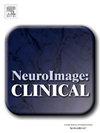Depth-electrode stimulation and concurrent functional MRI in humans: Factors influencing heating with body coil transmission
IF 3.4
2区 医学
Q2 NEUROIMAGING
引用次数: 0
Abstract
Electrical-stimulation fMRI (es-fMRI) combines direct stimulation of the brain via implanted electrodes with simultaneous rapid functional magnetic resonance imaging of the evoked response. Widely used to map effective functional connectivity in animal studies, its application to the human brain has been limited due to safety concerns. In particular, the method requires reliable prediction and minimization of local tissue heating close to the electrodes, which will vary with imaging parameters and hardware configurations. Electrode leads for such experiments typically remain connected to stimulators outside the magnet room and cannot therefore be treated as electrically short at the radio frequencies employed for 1.5 T and 3 T fMRI. The potential for significant absorption and scattering of radiofrequency energy from excitation pulses during imaging is therefore a major concern. We report a series of temperature measurements conducted in human brain phantoms at two independent imaging centers to characterize factors effecting RF heating of electrically long leads with body coil transmission at 3 Tesla for temporal RMS RF transmit fields () up to 3.5 µT including multiband echo planar imaging and 3D T2w turbo spin echo imaging. Under all conditions tested, with one exception, the temperature rise measured immediately adjacent to electrode contacts in a head-torso phantom with body coil RF transmission was less than 0.75 °C. We provide detailed quantification across a range of configurations and conclude with specific recommendations for cable routing that will help ensure the safety of es-fMRI in humans and provide essential data to institutional review boards.
人体深度电极刺激和并发功能MRI:影响人体线圈传输加热的因素。
电刺激功能磁共振成像(es-fMRI)通过植入电极对大脑进行直接刺激,同时对诱发反应进行快速功能磁共振成像。在动物研究中,它被广泛用于绘制有效的功能连接,但由于安全问题,它在人脑中的应用受到限制。特别是,该方法需要可靠的预测和最小化靠近电极的局部组织加热,这将随着成像参数和硬件配置而变化。用于此类实验的电极引线通常与磁室外的刺激器保持连接,因此在用于1.5 T和3t fMRI的无线电频率上不能被视为电短。因此,在成像过程中,来自激励脉冲的射频能量的显著吸收和散射的潜力是一个主要问题。我们报告了在两个独立的成像中心对人脑幻象进行的一系列温度测量,以表征影响3特斯拉时间RMS RF发射场([公式:见文本])高达3.5 μ T的电长引线射频加热的因素,包括多波段回波平面成像和3D T2w涡轮自旋回波成像。在所有测试条件下,除了一个例外,在身体线圈射频传输的头部躯干模型中,直接靠近电极接触处测量的温升小于0.75°C。我们提供了一系列配置的详细量化,并总结了电缆布线的具体建议,这将有助于确保es-fMRI在人体中的安全性,并为机构审查委员会提供必要的数据。
本文章由计算机程序翻译,如有差异,请以英文原文为准。
求助全文
约1分钟内获得全文
求助全文
来源期刊

Neuroimage-Clinical
NEUROIMAGING-
CiteScore
7.50
自引率
4.80%
发文量
368
审稿时长
52 days
期刊介绍:
NeuroImage: Clinical, a journal of diseases, disorders and syndromes involving the Nervous System, provides a vehicle for communicating important advances in the study of abnormal structure-function relationships of the human nervous system based on imaging.
The focus of NeuroImage: Clinical is on defining changes to the brain associated with primary neurologic and psychiatric diseases and disorders of the nervous system as well as behavioral syndromes and developmental conditions. The main criterion for judging papers is the extent of scientific advancement in the understanding of the pathophysiologic mechanisms of diseases and disorders, in identification of functional models that link clinical signs and symptoms with brain function and in the creation of image based tools applicable to a broad range of clinical needs including diagnosis, monitoring and tracking of illness, predicting therapeutic response and development of new treatments. Papers dealing with structure and function in animal models will also be considered if they reveal mechanisms that can be readily translated to human conditions.
 求助内容:
求助内容: 应助结果提醒方式:
应助结果提醒方式:


